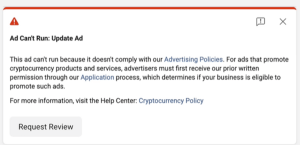Are you spending too much time on tactical decisions? Learn the importance of a strategic focus to boost your team’s effectiveness.
I am fascinated by the interplay between strategic and tactical decisions. Neither is better than the other, and you couldn’t just adopt one type exclusively. My experience with marketing teams — and marketing in general — is that they spend most of their time on tactical decisions, like:
- How to optimize a specific campaign.
- How to improve the conversion rate by tweaking headlines.
- Or how to add a few percentage points to open rates.
I understand why this thinking has become prevalent. The tactical decisions are often easier to approach than strategic decisions, which are inherently more vague and tougher to pin down. However, you can’t just focus on tactical decisions at the expense of strategic ones. Otherwise, you can find yourself optimizing the wrong things.
In this article, you will learn the difference between strategic and tactical decisions and how to shift your team’s time to ensure appropriate time is being spent on both of them.
Strategic decisions: The hard questions
The easiest distinction between strategic and tactical decisions comes down to whether you’re talking about the “what” or the “how” in any situation. Deciding to focus on brand building this quarter is strategic, and deciding to launch a specific type of brand campaign on Facebook is tactical.
Strategic decisions usually have many ways of accomplishing them. You can build a brand in all kinds of ways. The challenge is that some teams tend to jump at the tactical right away. They hear brand building and instantly go into the details behind every campaign:
- The copy.
- What kind of images to use.
- How to evoke certain emotions.
- And so forth.
These are all good tactical decisions, assuming they are aligned with a strategic decision.
Strategic decisions are inherently complex because there are no easy answers. Deciding to focus on brand building may be an “on the field” call backed by little evidence. A leader may have a hunch that brand building is the right thing to do next, even though the data may point to something else.
When I facilitate strategic sessions, we only tackle a handful of questions over a few hours. We aren’t trying to check off as many items as possible in a checklist. Instead, we are trying to make the high-level decisions that will make everything else fall into place. Making a clear choice, like our branding example, cuts off entire branches of tactical decisions. We don’t need to worry about acquiring customers and everything that comes from that.
In your team, you want to take a step back and think of all the work that you’re doing. Are these tasks the results of a well-thought-out strategic decision, or are you just trying to fill time or throw spaghetti at a wall?
Tactical decisions: Rewarding but easy
When I do workshops on decision-making, I usually don’t spend much time on tactical decisions. After all, most people are intimately familiar with them. This is where many people shine.
Tactical decisions can be incredibly small (i.e., choosing the color for an ad), or they could be large (i.e., deciding an overall structure for a landing page). The theme is that you’re working on the “how” of some strategic decision.
Let’s return to the branding strategic decision example from the previous section. How can you contribute to this effort, based on your role and skills? Tactical decisions are where checklists, Trello boards, and other productivity systems shine. There’s often lots of decisions to be made, and some of them may require the input of multiple people.
The main thing to remember here is that it originates from a strategic decision. As you encounter a seemingly infinite amount of tactical decisions, you need to constantly ask if this specific decision will help you get closer to the goal established (brand building in my ongoing example).
Be mindful of the positive reinforcement loop that comes from making tactical decisions. It can feel great to check off items left and right, but that may not get you closer to the strategic goal. For example, I love attending hot yoga, and there’s something about the 100°F heat that makes you feel like you’re working harder than you really are. The same can happen with tactical decisions.
What’s your team split?
Consider how your team spends their time on these two types of decisions. While there’s no magic ratio, I would argue that something between 30% strategic and 70% tactical makes the most sense. Strategic decisions are fewer by design, and you can’t spend all of your time here. Otherwise, no work will actually get done.
I am more concerned with teams where the split is 5% strategic and 95% tactical or worse. These teams are just running around, putting out fires, trying whatever idea comes their way in the form of a TikTok video or random web article. The complete lack of a strategic approach means that even good tactical ideas aren’t getting enough time to shine. It’s like frantically looking for your keys around your house instead of calmly retracing your steps and systematically checking different locations.
You can start to shift the time by introducing structure into your team. It could be in the form of sprints — usually in weeks — or by having a deliberate start and end point to your planning cycles. Spending time at the beginning of each cycle to go through the strategic decisions and then spending time at the end to review will start to bring the necessary pauses to your team’s work.
Optimizing marketing performance: The role of strategy and tactics
Giving strategic decisions enough time (but not too much) will make tactical decisions easier. You can clear entire to-do lists by making a single strategic decision. That kind of leverage is hard to find anywhere else. Make the transition today by taking the strategic decision to shift your team’s ratio.
The post Strategic vs. tactical decisions: How to find the right balance appeared first on MarTech.
MarTech(6)


